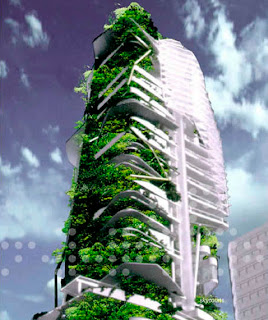

When I think of utopias, my mind is full of images of failure. Vast housing schemes being knocked down before they are even paid for. Cities the product of an individuals dream, meant to be the perfect city but containing no evidence to support the reason why they would. Then these models, parts at least, become realised and the evidence that they don’t work becomes all to clear. The Dragons of Eden, by Carl Sagan (1977),
‘Deals with the human brain in the context of the evolutionary history of the animal kingdom and recognises four major phases of development, each of which continues to function in its own cerebral layer, and each of which would have implications for home-making.’
The first component, we see in limpets that form a protective shell, shrimps that burrow into the sand, and snails that create a mobile home. The second development relates to increased power to interact with other organisms, through ritual behaviour, social hierarchy and aggressiveness, which lead to the acquiring of territories. In the third phase birds and mammals developed warm bloodedness and endocrine glands, intensifying consciousness through feelings and emotions. Creating the need for nests and burrows to combat the fear of attack and provide care of the young. Finally, the primate-human neocortex developed a high level of foresight, manual dexterity, reasoning, concern, and ethical understanding, developing home making as an adaptable, individual process.
‘Each major edition overshadowed the parts of the brain so that we tend to ignore them, but we do so at our own peril; we are adaptable but not infinitely adaptable. However, in the matter of housing we are discovering our adaptive limits very slowly and through trial and error and during the utopia epoch both the trial and the error seem to be on a more massive scale than the discovery.’ The failure of utopian cities such as Radiant and Garden Cities are clear to us today; much work has been done on understanding why. Alice Coleman writes in Utopia on Trial of some of the shortfalls of housing estates that sprung up predominately in the sixties, as extracts of Radiant City, to combat housing shortages. Town planners saw multi-storey flats as the answer, after the Second World War, to housing shortages and solving the problem in the least amount of time. This was in spite of the fact that the US had already built similar blocks of flats with negative results; in the UK these were seen as American problems, and that they wouldn’t exist here. Jane Jacobs was one of the first to predict and later witness the troubles that estates could cause she argued that the successful areas of a city, are those with many small streets close together, busy with people walking through. As those who live there become familiar with others who live close by, individual skills can be noted and called upon at times of need. It also provides a network of surveillance to care for children in the community and apprehend criminal behaviour. ‘Their involvement is reinforced by ‘eyes on the street’ from the windows of the buildings’
Radient City proclaims that it provides a strong, stable social structure, when infact its design segregates the city into areas such as residential, business and parks. This makes it impossible to rely on walking from place to place, forcing citizens to drive down the main roots of the city, which in turn get overcrowded while elsewhere becomes abandoned. Jane Jacobs also describes how the car restricts the normal interaction two strangers might encounter on a street, making a city a more isolated and lonely place.
‘In 1961 there were still too few post-war housing estates for her message to be inescapably self-evident.’ Her argument was mostly ignored if not attacked by planners in this country who continued to build high rise housing estates. Oscar Newman analysed many such projects. ‘Newman’s aim was to discover which design features attracted the most crime or vandalism.’ In a book titled Defensible Space, he picked up on three main topics to account for discomfort in housing estates caused by crime. Firstly, anonymity, a criminal seeks to be unseen and avoid being confronted. High-rise blocks created the perfect cover. Newmans studies revealed that crime rates are higher in flats with a greater number of floors. Internal corridors with no windows looking onto them and the greater number of people living there also pushed up crime rates. When there’s many people living in one building, it is harder for residents to recognise everyone. Making it easier for criminals to go unnoticed. Secondly, surveillance, the positioning of the entrance as to whether or not it is possible for residents to see who passes through affects safety. Crime rates are lower when there is clear site of the entrance. Thirdly, escape roots, criminals like an easy get away if they need it, security guards have often complaned of it being too easy to loose the suspect with a multidude of exits.
When you analyse the facts like this it becomes clear as to why these Utopias failed. Next time, before instigating an idea for Utopia, force-feeding countries capitalism or eating fish, stop and check it works.











 the melting polar ice caps will be destroy the
the melting polar ice caps will be destroy the 














